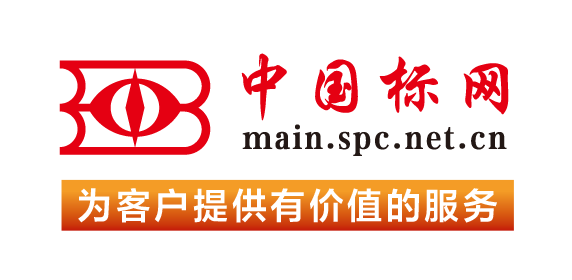【国外标准】 Standard Practice for Reporting Particle Size Characterization Data
本网站 发布时间:
2024-02-28
开通会员免费在线看70000余条国内标准,赠送文本下载次数,单本最低仅合13.3元!还可享标准出版进度查询、定制跟踪推送、标准查新等超多特权!
查看详情>>
适用范围:
3.1 When evaluating the particle size information, if the procedures of the data processing are not available, the user of the data must make assumptions concerning the reported data in the event of analytical inconsistencies. In order for different data sets to be compared it is crucial that the parties report the analytical techniques and methods or procedures for evaluating, calculating, compiling or otherwise processing the data to be reported.3.2 Particle size characterization information can be reported in three levels of detail in order to satisfy user's needs.3.2.1 Level 1 applies when only basic information about the material is required, and shall be provided with each shipment. This level represents the minimum information that shall be reported. Level 1 information may be sufficient in such cases as identifying a certain grade of a material or when detailed knowledge of analytical methodology is not needed.3.2.2 Level 2 presumes the need for knowledge of methodology on the user's part and allows the user to make a more informed judgment about the information provided in Level 1.3.2.3 Level 3 provides detailed written procedures to allow duplication of the measurement.3.2.4 Information provided through Levels 2 and 3 will allow users to perform comparative material evaluations among several suppliers, set specifications or define a purchase agreement, perform inter-laboratory studies and most importantly resolve disputes among suppliers and users.3.3 Reported particle size measurement is a function of both the actual particle dimension and shape factor as well as the particular physical or chemical properties of the particle being measured. Caution is required when comparing data from instruments operating on different physical or chemical parameters or with different particle size measurement ranges. Sample acquisition, handling and preparation can also affect the reported particle size results.1.1 This practice covers reporting particle size measurement data.1.2 This practice applies to particle size measurement methods, devices, detail levels, and data formats for dry powders, and wet suspensions of solids, gels, or emulsion droplets. This practice does not pertain to liquid particles.NOTE 1: For information on reporting liquid particle measurement data, refer to Practice E799.1.3 This practice does not concern particle concentration information.1.4 This practice uses SI (Système International) units as standard. State all numerical values in terms of SI units unless specific instrumentation software reports particle size information, including percentiles, indices, and distributions as tabulations and graphs using alternate units. In this case, present both reported and equivalent SI units in the final written report. Refer to Practice E380 for proper usage of SI units.1.5 This standard does not purport to address all of the safety concerns, if any, associated with its use. It is the responsibility of the user of this standard to establish appropriate safety, health, and environmental practices and determine the applicability of regulatory limitations prior to use.1.6 This international standard was developed in accordance with internationally recognized principles on standardization established in the Decision on Principles for the Development of International Standards, Guides and Recommendations issued by the World Trade Organization Technical Barriers to Trade (TBT) Committee.
标准号:
ASTM E1617-09(2019)
标准名称:
Standard Practice for Reporting Particle Size Characterization Data
英文名称:
Standard Practice for Reporting Particle Size Characterization Data标准状态:
Active-
发布日期:
-
实施日期:
出版语种:
- 推荐标准
- ASTM 51401-21 Standard Practice for Use of a Dichromate Dosimetry System
- ASTM 51956-21 Standard Practice for Use of a Thermoluminescence-Dosimetry System (TLD System) for Radiation Processing
- ASTM A1010/A1010M-24 Standard Specification for Higher-Strength Martensitic Stainless Steel Plate, Sheet, and Strip
- ASTM A1016/A1016M-24 Standard Specification for General Requirements for Ferritic Alloy Steel, Austenitic Alloy Steel, and Stainless Steel Tubes
- ASTM A105/A105M-24 Standard Specification for Carbon Steel Forgings for Piping Applications
- ASTM A1064/A1064M-24 Standard Specification for Carbon-Steel Wire and Welded Wire Reinforcement, Plain and Deformed, for Concrete
- ASTM A108-24 Standard Specification for Steel Bar, Carbon and Alloy, Cold-Finished
- ASTM A1080/A1080M-24 Standard Practice for Hot Isostatic Pressing of Steel, Stainless Steel, and Related Alloy Castings
- ASTM A1090/A1090M-19(2024) Standard Specification for Forged Rings and Hollows for Use as Base Plates in Power Transmission Structures
- ASTM A1115/A1115M-24 Standard Practice for Construction of Mechanically Stabilized Earth Walls with Inextensible Soil Reinforcement
- ASTM A1128-24 Standard Specification for Stainless Steel Shielded, Rubber Gasketed Couplings Having an Integral Restraint Feature for Joining Hubless Cast Iron Soil Pipes and Fittings Where External Restraint Is Required
- ASTM A179/A179M-24 Standard Specification for Seamless Cold-Drawn Low-Carbon Steel Heat-Exchanger and Condenser Tubes
- ASTM A234/A234M-24 Standard Specification for Piping Fittings of Wrought Carbon Steel and Alloy Steel for Moderate and High Temperature Service
- ASTM A242/A242M-24 Standard Specification for High-Strength Low-Alloy Structural Steel
- ASTM A249/A249M-24a Standard Specification for Welded Austenitic Steel Boiler, Superheater, Heat-Exchanger, and Condenser Tubes
 我的标准
我的标准 购物车
购物车 400-168-0010
400-168-0010














